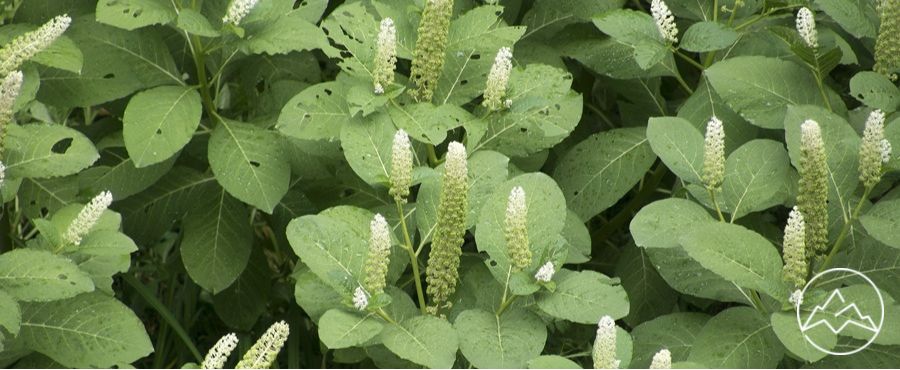Summer is a great time to plan a family camping trip. You get to observe nature and become one with it.
While you may find it tempting to eat berries and plants that look editable in the wild around your campsite, there are a few dangers you should be mindful of. Not all berries and plants are safe to eat.
Here is a list of five poisonous plants and poisonous berries you should avoid while out in the wild due to their harmful side effects.
Poisonous plants and berries: The facts
Many people know about harmful plants lurking in our backyards, like poison ivy, and poison sumac. Still, that knowledge is much thinner once we’re out in the wild.
If you plan to spend any time out in the woods, it’s essential to know which plants that look harmless may actually be hazardous to touch or ingest.
Avoid these plants if you see them in the wild, or in your backyard.
#1 – Pokeweed
You can find pokeweed in various parts of the United States, Europe, and Asia. Located in the wild and the suburbs, this plant poses a significant threat to humans and pets.
A perennial, it gets bigger with each year, and by summer can look like a shrub. According to reports from the Washington Post, pokeweed is one of the leading sources of plant poisoning in the United States.
Here are some ways to identify it:
- Thick stems that are upright and branched with a pinkish-red hue
- Stems look similar to rhubarb
- Grows up to 5 feet tall
- Clusters of berries like grapes
According to the Children’s Hospital of Philadelphia, the symptoms after eating just 10 of these berries are:
- Nausea
- Vomiting
- Headache
- Severe abdominal pain
- Diarrhea
There are natural medicine preparations that use the leaves of this plant to induce vomiting. The bright colors of the berries and stems might appeal to kids.
#2 – Giant hogweed
This wild plant is part of the carrot family, but don’t let that fool you. This carrot doppelganger is nothing like the harmless vegetable.This plant originally comes from Asia. You can find it in America along streams, fields, and forests. It’s a very dangerous plant that you should never touch or consume.
Here’s what to look for:
- White flowering that forms a flat-capped umbrella shape
- Grows up to 14 feet tall
- Leaves have a lobed shape, a deep cut and can be 5 feet across
- Stems have thick, hollow stalks with coarse white hairs circling them
The effects of this plant are very severe. Here are the main symptoms associated with coming into contact with this plant or its sap:
- Causes severe burns on your skin
- Scarring for up to 6 years
- Blindness if sap gets in your eyes
Should you come into contact with giant hogweed, you should wash with soap and water vigorously and stay out of sunlight for at least 48 hours.
#3 – Nightshade
Children often mistake nightshade for blueberries. Nightshade is a lot more dangerous. According to Slate, eating two berries is enough to be lethal to a child.
Nightshade is common in many parts of the United States. You can usually find it around dumps, quarries, and on top of wooded hills.
What does this deadly berry look like?
- A shrub that is about 4 feet tall
- Long leaves that are about 7 inches
- Bell-shaped purple flowers with green edges
- Berries turn a shiny black color
Both the leaves and the berries contain a potent concentration of a toxic compound known as tropane alkaloids that can be lethal.
Ten berries are enough to kill an adult.#4 – Poison hemlock
If you’ve ever studied the great philosophers, you may recall that Socrates died from ingesting a lethal dose of hemlock. Ingesting hemlock can be deadly.
Similar in appearance to wild parsnip and wild carrots, hemlock is much more dangerous. Keep in mind that the hemlock tree is an entirely different species. You can find hemlock in many regions of the United States.What does it look like?
- White umbrella-shaped canopy of flowers
- Hollow stems that have reddish or purple spots
- Fern-like, bright green leaves
If you ingest hemlock, you might start experiencing symptoms in as little as twenty minutes, but it can take up to three hours for the following symptoms to appear:
- Paralysis
- Slowed heartbeat
- Death due to respiratory failure
#5 – Yew berry
The yew berry is a common shrub that you can find in the United States. This plant looks like a small evergreen shrub with cherry-like berries.
What do they look like?
- Soft, thick pine needles with berries
- Grows up to 5 feet tall
- Berries resemble maraschino cherries
Though tempting to eat, these poisonous berries are extremely dangerous. Eating just three yew berries can cause the following symptoms:
- Nausea
- Vomiting
- Abdominal pain
- Dizziness
- Difficulty breathing
- Changes in heart rate
FAQs About Poisonous Berries & Plants to Avoid
What are the common signs and symptoms of poisoning from eating poisonous berries?
Are there any edible berries that resemble poisonous varieties?
How can I tell if a plant is poisonous or not before consuming it?
Are larger doses of a toxin necessarily more dangerous than smaller doses, or does it depend on the type of poison involved?
Is there anything I can do if I encounter an unknown berry or plant while hiking in the wilderness?
Better safe than sorry
When it comes to wild plants and berries, you can never be too careful. Someone without the proper education could be ingesting poisonous berries or poisonous plants without even knowing it. It’s best to avoid touching or ingesting any kind of plant or berry in the wilderness.



